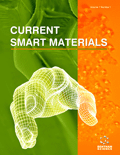Abstract
Background: Cellulose is one of the most frequently used natural polymers, and is considered an almost inexhaustible source of raw materials. It has been used as an electrorheological material for many years due to its outstanding properties including possession of polar groups, low density and easy modification, while cellulose has complicated morphologies and crystal structures according to treatment methods. In this work, the influence of these characteristics on electrorheological properties was studied by comparing the electrorheological properties of the hydrolyzed cellulose.
Methods: The hydrolyzed cellulose samples were prepared in an acid mixture of HCl and H2SO4 at different times. Their morphologies and structures were studied using scanning electron microscopy, Fourier transforms infrared spectroscopy and X-ray diffraction. The electrorheological behaviors of the raw and hydrolyzed cellulose samples in silicone oil were observed using a rotational rheometer.
Results: The morphology and crystal structures of the cellulose were observed to change with hydrolyzation time and closely related to the ER properties of the cellulose. Compared to raw cellulose, hydrolyzed samples showed an initial decrease in the ER effect which was followed by increased ER effect with prolonged hydrolyzation time.
Conclusion: The distinct differences in ER effects of the raw and hydrolyzed cellulose samples indicated that with the exception of particle size and shape, the condensed or crystal structures of the particles have significant effects on the ER properties of cellulose. In addition, higher degrees of crystallinity may lead to lower ER effect.
Keywords: Cellulose, crystal structure, electrorheological fluid, hydrolysis, morphology, yield stress.
Graphical Abstract
 16
16 2
2 1
1 1
1




